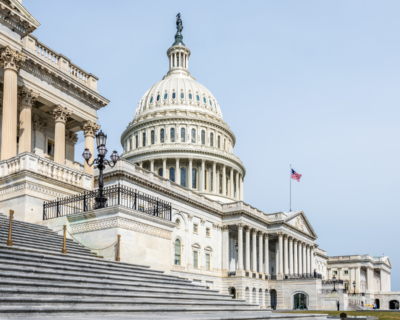
Commentary: Mercatus Pension Study Demonstrates Advantages Of Defined Contribution System
States need to curb liabilities and relieve taxpayers as defined benefit systems head towards insolvency
A new report by Scott Beaulier for the Mercatus Center at George Mason University illustrates the perilous finances of defined benefit public pension plans and their political and economic implications. The report suggests that defined contribution plans would help return pensions to solvency.
Currently, the majority of public pension plans throughout the country are defined benefit plans, which are woefully underfunded. At the end of the 2009 fiscal year, promised pensions to public employees exceeded existing trusts by a shocking $1.26 trillion. This represents a 26 percent increase since 2008, and this estimate is more conservative than many other recent estimates.
The evidence demonstrates that current trends in defined benefit plans are unsustainable. Whereas the ratio of public workers to retirees in 1970 was 5.3 to 1, it is now 4.5 to 1 and is estimated to be 2.1 to 1 in 2050. Unfortunately, politicians have been reluctant to encourage necessary reforms out of political expediency. As a result, state governments have resorted to measures like tax increases and benefit cuts to temporarily close the gap. Still, most are nothing more than pay-as-you-go schemes.
These policies are a recipe for economic stagnation and recession. States suffering from fragile economies face the specter of huge pension shortfalls, and governments want to avoid austerity measures. A transition to the defined contribution system, or a hybrid of it, is a sensible solution.
Defined contribution plans may not be perfect, but they are 100 percent funded. A defined contribution plan, like a 401(k), is one where the individual is guaranteed to receive the amount of his contributions, plus or minus market returns. As Beaulier explains, “a defined contribution system is one no longer supported by taxpayers, but, rather, by the responsible investment choices of individuals.”
Defined contributions also provide the employee with more flexibility in how to invest their money, empowering individual choice over where their pension money goes and protecting against external factors like inflation. As explained within the report, they function much like savings plans, whereas defined benefits offer no control to the individual.
The report points to the success found by Michigan, Georgia, and Utah in transitioning over to defined contribution systems, while also highlighting the dismal state of affairs in Illinois and Kentucky, which have largely resisted any substantial pension reforms. Though the transition incurs unavoidable costs, Beaulier presents compelling evidence that the change will be rewarded with solid economic health and a more sustainable pension system.




